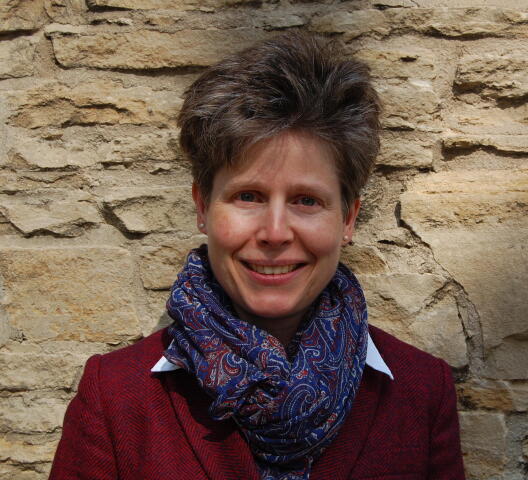“Peace in Ukraine only when Russia accepts Ukraine”
Interview with Eastern European historian Ricarda Vulpius on peace agreements in the past and lessons for today – “Minimal conditions for negotiations on Ukraine not met” – Peace of Westphalia 375 years ago is a model – Subordinate role of religion in Ukraine

The Cluster of Excellence “Religion and Politics” has long been studying past and present wars and conflicts, as well as strategies and symbols of peace. The symposium “Winning the peace from 1648 to today: Historical perspectives on the Peace of Westphalia and the present day” will shed light on the question of what we can learn for situations of war in the present from peace agreements in the past such as the Peace of Westphalia in 1648. The LWL Institute for Westphalian Regional History, the Cluster of Excellence, and the City of Münster are organizing the event in Münster on 16 October 2023 as part of the anniversary year “375 Years of the Peace of Westphalia”. An interview with Eastern European historian Prof. Dr. Ricarda Vulpius from the Cluster of Excellence.
How can peace be created in Ukraine?
Peace in Ukraine can only be created when both sides fundamentally accept the other’s existence. As long as the Russian government rejects the Ukrainian government as a negotiating partner, there can be no peace negotiations. This is the biggest obstacle to negotiations.
Opportunities for negotiation arise when the Russian government comes under pressure: either in terms of foreign policy, when Russia is threatened with defeat on the battlefields in Ukraine, or in terms of domestic policy, when protests against the continuation of the war grow and further bloodshed is considered too risky for political stability at home.
The Peace of Westphalia is considered a model for sustainable peace in a complex war situation. How can it be a model today?
It is important to look at the conditions that enabled the warring parties then to begin negotiations: namely, the emergence of a military stalemate. None of the warring parties at the time saw any chance of gaining significant ground at a reasonable cost in terms of human lives and material. And, after decades of fighting and devastation, there was also war fatigue.
The Peace of Westphalia is a great model for the settlement of any war today in that it created a lasting order of security, one that did not collapse again at the next best opportunity. This was achieved by minutely balancing the diverging interests, while at the same time creating safeguards that ensured that all parties adhered to the agreements.
Where are the parallels and the differences between then and now?
A parallel could occur if there is a military stalemate in the Russian-Ukrainian war. While this is what it looks like to some outsiders at the moment, this impression is deceptive.
The biggest difference is that the Russian side has not yet sent any signal that it is interested in negotiations to achieve a just peace. The second major difference is that none of those involved in the Thirty Years’ War denied one or more parties the right to exist.
The third major difference is that, as a nuclear power, Russia is in essence invincible. This creates an asymmetry vis-à-vis Ukraine, which handed over its nuclear weapons as part of the Budapest Memorandum of 2004. This saw Russia pledge to respect Ukraine’s territorial integrity from then on.
What role does religion play, and what role does the interaction of religious and political forces play?
Religion plays a subordinate role in Russia’s war against Ukraine insofar as there are no fundamental religious differences between the warring parties. The religious differences relate almost exclusively to the dimension of church politics, i.e. to the question of whether the Orthodox Church in Ukraine should be subject to the jurisdiction of the Russian Orthodox Church, or whether it can exist independently, autocephalously.
The issue of autocephaly, which the Patriarchate of Constantinople granted to the Orthodox Church of Ukraine (OCU) in 2019, had already led to the considerable hardening of the church-political fronts between Moscow and Kiev before the war. Besides the OCU, there is also the Ukrainian Orthodox Church (UOC), which has declared itself “independent” from the Moscow Patriarchate, but has not yet declared itself to be ultimately autocephalous. There have been intensified conflicts since the beginning of the war between the OCU and the UOC, and above all between the Ukrainian government and the UOC.
What peace agreements in the past can we still learn from?
An important formula of the first travel permit agreement of 1963 between the GDR and the Federal Republic was “We agree to disagree”. This made it possible to omit certain issues that could not be agreed on and to proceed with negotiations on other issues. At that time, it was of course not about ending a “live” war. But it is certainly helpful to keep this approach in mind for the start of negotiations to end the Russian-Ukrainian war, too. At the same time, of course, this formula cannot be used when it comes to the preconditions for negotiations in the first place, i.e. the fundamental acceptance of the other as a negotiating partner.
Is it of any use to draw on history to address issues of the present?
It is definitely helpful to analyze imaginary worlds and practices of the past. For one thing, only then do people become aware of how time-bound and thus mutable their own ideas are, which entails a healthy humility before humanity and creation. On the other, it is only then that we can understand how the present has come to be. Peace cannot be found without understanding the preconditions of the present, which is especially true of the current Russian-Ukrainian war. (vvm/tec)

